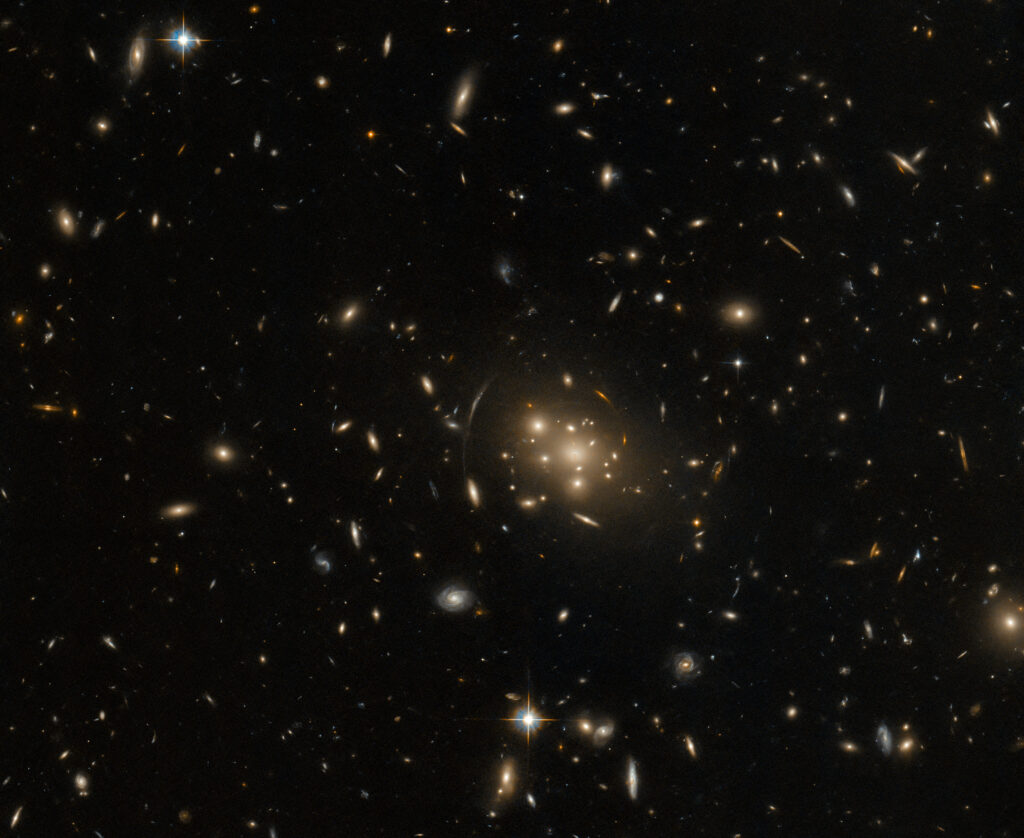Specialists of the Hubble mission support team have published a new image showing a section of the sky in the constellation Cetus. In its center you can see a gravitational lens.

The effect of gravitational lensing occurs when a massive object is located on the line connecting the observer and a more distant background radiation source. As a result, the gravity of this object, like a lens, can distort and amplify light from a distant source, and sometimes even duplicate its image.
In this case, the gravitational lens was the galactic cluster SPT-CL J0019-2026. If you look closely, you can see that it is “framed” by characteristic bright arches. These are images of more distant galaxies that have been amplified and distorted by the cluster’s gravity.
Astronomers actively use gravitational lenses as a kind of natural telescopes. After all, they make it possible to see objects that are so far away from us that even the most powerful observatory could not see them. For example, it is thanks to gravitational lensing that the James Webb Telescope has recently been able to detect stellar structures in the first galaxies.
Earlier we talked about a study in which the authors came to the conclusion that wormholes could create gravitational lenses and amplify light by a hundred thousand times.
According to https://esahubble.org
Follow us on Twitter to get the most interesting space news in time
https://twitter.com/ust_magazine

